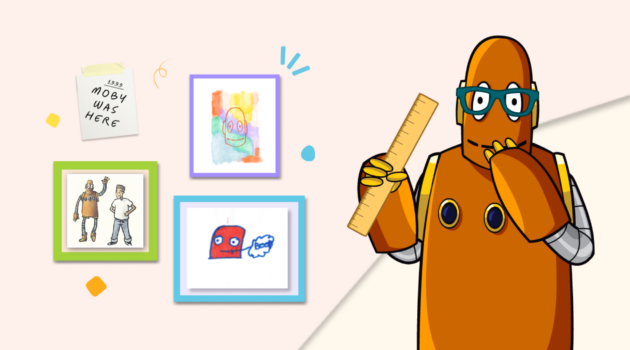Teacher Stories
The Kaleidoscope Effect: How Teachers’ Dynamic Identities Shape the Classroom

Do you remember that moment when you realized your teacher was more than just an educator—that they also have an identity outside of the classroom? Maybe you bumped into them at the grocery store, and suddenly it struck you: “Teachers have lives beyond school walls!”
There is also the common trope where teachers are cast as superheroes, but that descriptor can have the unintended effect of erasing their humanity. When we see teachers as superhuman, it’s easier to overlook their struggles and needs. In contrast, we can better understand teachers and the support they need when we acknowledge that they have distinct identities, hobbies, interests, passions, and challenging times like everyone else.
Supporting our students and building a dynamic learning environment should go hand in hand with looking out for our teachers’ mental health and well-being. When we recognize and value teachers (and all people) as multidimensional beings, we do our part to help them feel more fulfilled, motivated, and connected to their community. We can start by celebrating educators’ unique identities.
Seeing teachers through a wider lens
Here are some key ways in which embracing the multidimensional identities of teachers can have a positive impact on schools, students, and the educators themselves:
- Build empathy and understanding: Acknowledging that teachers are dynamic individuals deepens our understanding of and respect for their experience and the essential role they play in shaping the next generation.
- Elevate role models: Celebrating teachers’ unique interests and strengths empowers them to incorporate their passions into classroom lessons, which can motivate students to explore new hobbies or extracurricular activities.
- Create collaborative environments: Valuing teachers’ diverse expertise promotes communication and collaboration among educators, fostering a supportive atmosphere where sharing knowledge, skills, and experiences are encouraged.
- Prioritize professional development: School leaders who understand teachers’ strengths and areas for growth can design targeted professional development opportunities, enhancing educators’ skills and knowledge and supporting their personal and professional goals.
Reflective connections to see ourselves in others
Encouraging conversations about diverse experiences and perspectives creates a vibrant, welcoming classroom community. It fosters a culture where students learn from everyone’s unique story, which helps them feel comfortable, secure, and ready to learn.
- Mirrors to foster representation and connection: When students encounter teachers with similar backgrounds and worldviews, they feel understood and supported. This is particularly true for BIPOC students. In addition, identifying with their teachers creates a stronger sense of belonging.
- Windows to cultivate understanding and empathy: Teachers from different backgrounds offer glimpses into other cultures, communities, and perspectives. Sharing experiences nurture understanding and empathy among students, helping them appreciate and respect diversity in the classroom and beyond.
- Doors to encourage open discussions on diversity: When teachers facilitate conversations about diverse experiences, they open the door to illuminating discussions. A well-rounded understanding of the world promotes mutual respect.
Vibrant teachers, vibrant learning
When teachers are excited about their subject matter, their enthusiasm is contagious. Tapping into teachers’ interests and experiences helps activate students’ natural curiosity, which can build connections between the content they’re learning and the real world.
- Create relatable connections: Teachers who use personal interests and experiences to develop real-world examples and relatable scenarios can help students grasp complex concepts, explore relationships between subjects, and deepen understanding.
- Model social and emotional competencies: Teachers with strong empathy, conflict resolution, and collaboration skills are well-equipped to foster an environment that nurtures students’ own development in these areas. Research shows that these competencies contribute to improved academic outcomes and real-world preparedness.
- Inspire creativity and critical thinking: Teachers who share personal passions and expertise encourage their students to adopt a creative mindset and develop critical thinking and problem-solving skills. These skills are necessary for success in and out of the classroom.
- Champion a growth mindset: By modeling perseverance and sharing setbacks as learning opportunities, teachers can reinforce that learning is an ongoing process, not a finite achievement.
The bigger picture
When we embrace the kaleidoscope of teachers’ unique dimensions and perspectives, we create more inclusive, supportive, and authentic teaching and learning environments. By understanding and valuing all that teachers bring to the classroom, we can positively impact our schools and communities, ultimately fostering success for educators and students alike.
Michelle Strom is associate director, product marketing at BrainPOP. She holds a Master’s Degree in Educational Psychology, and is a former classroom teacher.






